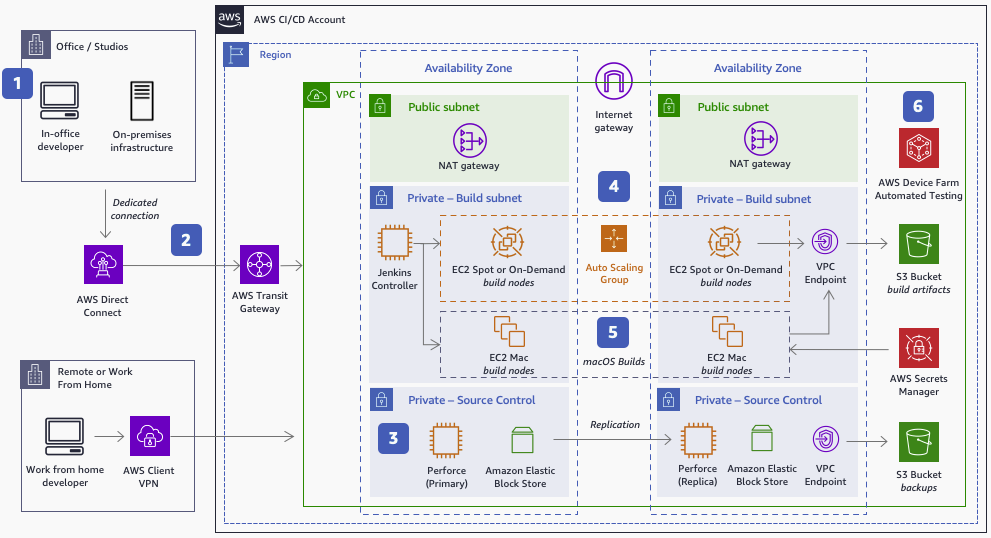Game production in the cloud – CI/CD
You must have CI/CD infrastructure when developing games. A game development CI/CD pipeline is typically comprised of highly available source control servers and storage, compute resources to run your builds, and software to perform automated testing, along with the proper network connectivity from your development machines. The following reference architecture demonstrates how to offload game builds from remote or on-premises game development environments to the AWS Cloud to aid developers in migrating or building new build farms.

-
AWS Direct Connect provides a low latency, private dedicated connected to AWS for in-office developers. Remote developers use AWS Client VPN.
-
AWS Transit Gateway simplifies network management for connectivity between VPCs and from on-premises networks.
-
Perforce manages source and version control (CI) backed by Amazon EBS storage for quickly accessed, persistent data. Perforce Helix Core (P4D) is available in the AWS Marketplace.
-
Commits start a build (CD) in Jenkins when developers push changes to Perforce tied to a branch. Perforce triggers POST a JSON payload to Jenkins. The Jenkins controller calls engine “headless” CLI commands to run and parallelize the build process across ephemeral, Docker nodes (such as Amazon EC2 Spot Instances), or Amazon EC2 On-Demand Instances. Developers can increase availability by using two Jenkins controllers, one in each Availability Zone, behind a load balancer. For some engines, developers might need additional licensing infrastructure configured in additional subnets to vend licenses for the build context each time a concurrent build is run.
-
The Xcode portion of iOS builds is offloaded to Amazon EC2 Mac instances to sign, build, and export the
.IPAfile, splitting the process and reducing build times. AWS Secrets Manager holds provisioning profiles, private keys, and certificates. -
Build artifacts are delivered to Amazon S3, which sends notifications of success or failure. AWS Device Farm enables automated testing.